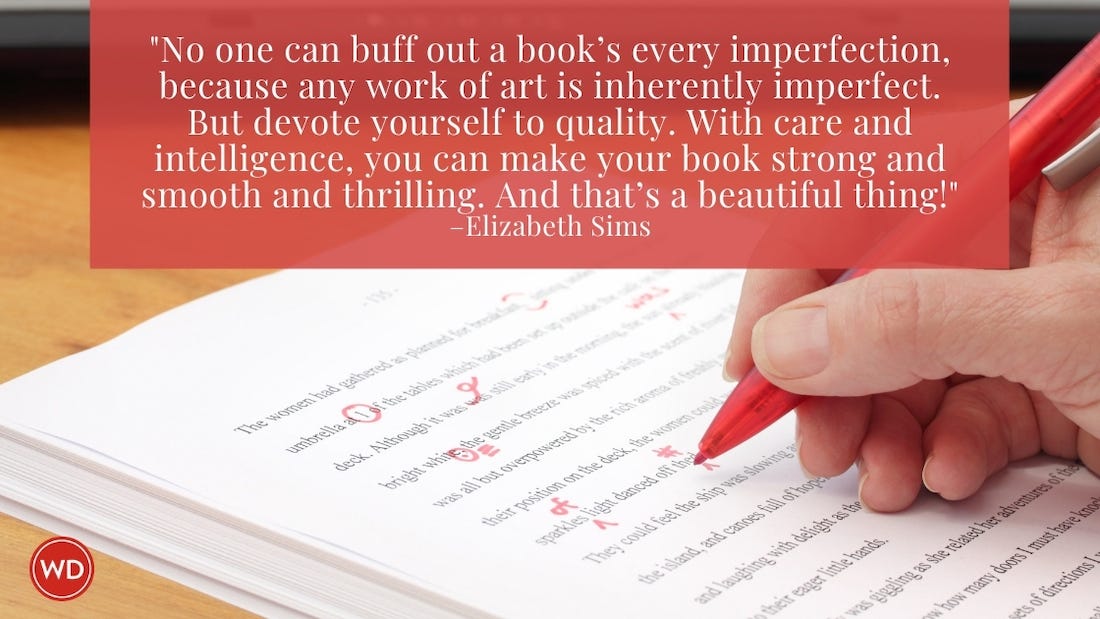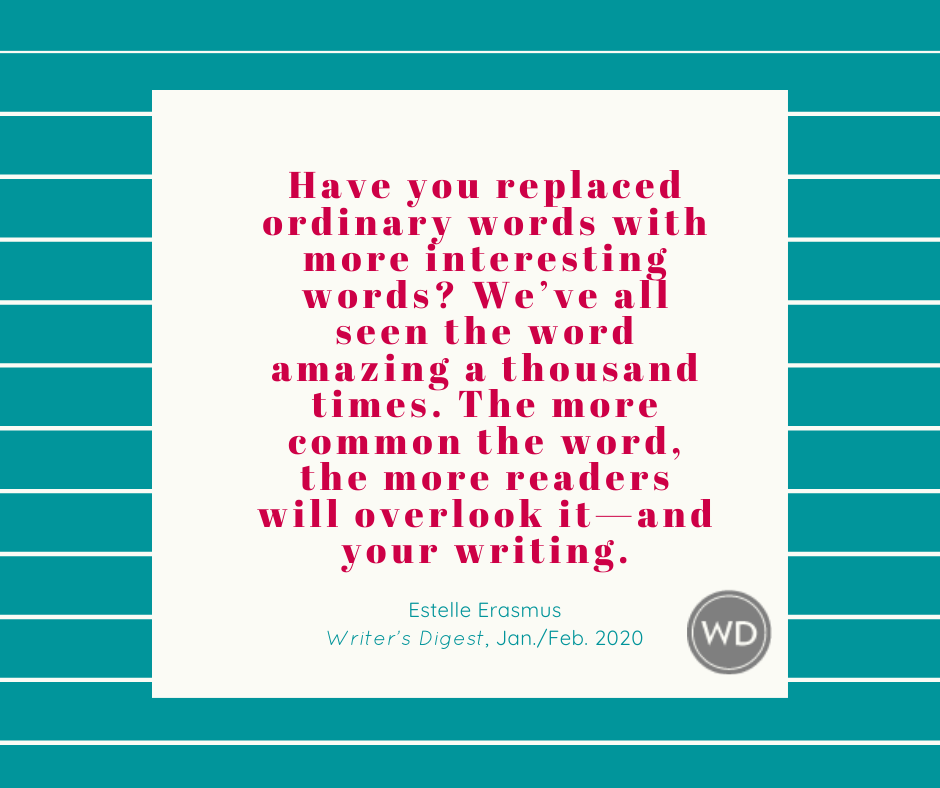10 Tips to Avoid Clichés in Writing
It’s not enough to love our story ideas. We need to weigh their suitability as subjects for fiction, and then figure out how to go about making use of them. This means steering clear of cliché and its sappy cousin—melodrama. Here are 10 tips to help you do just that.
It’s not enough to love our story ideas. We need to weigh their suitability as subjects for fiction, and then figure out how to go about making use of them. This means steering clear of cliché and its sappy cousin—melodrama. Here are 10 tips to help you do just that.
(Note: This article is about cliched themes, not phrases. If you want to learn about cliche phrases that all writers should avoid, check out these cliche examples).
Avoid Stolen or Borrowed Tales
A writer’s job is to write stories—not to steal or borrow them and, with a coat of fresh paint, pawn them off as original.
That should be obvious, but it’s not always completely clear. Our own private thoughts, dreams, intuitions, and fantasies are inevitably colored by what psychiatrist Carl Jung called the collective unconscious—the vast, reservoir-like body of shared human experiences and of myths, symbols, and legends.
Most sensational subjects have been treated to death. Result: a minefield of clichés. And, as novelist Martin Amis tells us, good writing is a “war against cliché.” The story’s problems might be partially redeemed by crisp dialogue, vivid descriptions, and an impeccable edgy style—but the plain fact is, they shouldn’t be solved. Steer clear of tired plots and you, your characters and your readers will avoid all kinds of heartache.
Resist The Lure of the Sensational
For beginning and experienced writers alike, the temptation to choose intrinsically dramatic subjects is hard to resist. Drug deals and busts gone wrong, kidnapping, abortion, car crashes, murder, madness, rape, war—with such sensational raw material to work with, how can writers go wrong?
They can and they do.
A writer who chooses to set his story in a mental hospital, for instance, may bumble into a minefield of clichés. He will need to avoid all the stereotypes of loony-bin lore coined by Ken Kesey in One Flew Over the Cuckoo’s Nest, and recycled in a myriad of TV shows and books.
Not that you can’t set a story on a mental ward, or that you can’t tell stories about mental patients and the abuses they suffer at the hands of their keepers. But if you do so, you need to realize what you’re up against.
And what you’re up against is cliché.
Turn a Stereotype on its Head
Every milieu has its clichés, its stock characters, and stereotypes. A common stereotype is that of the starving artist. Just once, I’d like to read about a talented, hard-working painter, supplementing his small income from gallery sales through teaching, grants, and fellowships. This, after all, is the reality for many professional fine artists.
Even poor Vincent van Gogh, that most depraved and deprived of artists, fails to live up to the image. The letters he wrote to his brother Theo and others show how sane this “madman” was. True, he often went hungry, and he suffered from incapacitating seizures. But the cartoon of the foaming madman does him no justice.
The real problem with clichés is that they deprive us of genuine details, which, though less sensational, are both more convincing and more interesting. A deeper look into the life of any artist will reveal facts that have it over all clichés.
The truth is the best weapon we have for authenticity and against cliché: Whether it’s the literal truth or the truth of imagination doesn’t matter.
Tell the Story Only You Can Tell
When we produce stories that are derivative, we’re not being honest with ourselves. We’re borrowing someone else’s aesthetics and selling them as our own.
In choosing intrinsically sensational subjects, writers think they’re getting a free—or a cheap—ride. But as with most things in life, you tend to get what you pay for.
The best way to avoid cliché is to practice sincerity. If we’ve come by sensational material honestly, through our own personal experience or imagination, we may rightly claim it as our own. Otherwise, we’d best steer clear. Our stories should be stories that only we can tell, as only we can tell them.
Keep it Real by Taking it Slow
My favorite exercise is to ask my students to write two pieces, one at a time, each about a minute long. Piece 1 should rivet the reader; Piece 2 should bore the reader stiff. Each student reads both pieces out loud.
Whenever I’ve done this experiment, in almost every instance the result is the same: The “riveting” piece bores, while the “boring” piece holds interest. There are several reasons for this. In their effort to grip us, beginning writers tend to rush: They equate their own adrenaline with that of the reader. Conversely, when trying to bore, the same writers take their time; they don’t hesitate to lavish 250 words on the subject of a wall of white paint drying. And—to their consternation—the result mesmerizes. At any rate, it holds our attention.
But far worse than rushing, in trying to interest us, most writers abandon sincerity and, with it, authenticity. They choose sensational subjects on the basis of little personal knowledge and no genuine emotional investment. They do so on the assumption that their own stories aren’t interesting enough, that what they have to offer isn’t suitably “sensational.” In fact, every human is in some way unique, and this in itself makes us each “sensational” in our own ways.
In pretending to be anyone other than themselves, writers sacrifice the very thing we most crave from them: authenticity.
Deliver Your Story From Circumstantial Cliché
As the moth is attracted to flame, less-than-vigilant writers are attracted to the bright light of intrinsically dramatic situations, where the drama is preassembled, ready to use—convenient.
We’re drawn to clichés because they’re convenient. And convenience for writers—convenient plots, convenient characters, convenient coincidences, convenient settings or situations or strings of words—almost always spells doom.
A writer sets her story in an abortion clinic. What are the expectations raised by such a setting? To the extent that the common expectations raised by this setting are met head-on, the story fails. It descends into cliché and denies the reader an authentic experience.
What will the author do to rescue that drama from our expectations, from cliché? Steer clear of such territory to give us a story that reawakens our senses to a subject that has in and of itself become a cliché.
Elevate the Ordinary
F. Scott Fitzgerald said, “All good writing is swimming underwater and holding your breath.”
Either your chosen subject plunges you into the imagination’s deeper waters, or your story will probably drift into one of two shallow waterways:
- The autobiographical estuary, in which you write strictly about characters and events from your own life; or
- The brackish bay of stereotype and cliché.
The way to rescue this and other clichés may lie in exploring those parts of the story that don’t belong firmly to the cliché. By investing our characters with concerns and struggles that point away from the hackneyed and sensational and toward the earthier dramas of “ordinary” existence, by taking the most trite elements of our stories out of the foreground and putting them in the background, we begin to lift them out of cliché.
Rescue Gratuitous Scenes From Melodramatic Action
Overly convenient subjects are prone not only to cliché but also to melodrama.
We call a story or a scene melodramatic when its protagonists are too obviously heroes or victims and its antagonists are obviously villains. Another acid test for melodrama is the tendency to resort to violence, either emotional (catatonic seizures, gasps, screams, floods of tears, verbal confrontations) or physical (fisticuffs—or worse, depending on the caliber of melodrama and available firearms).
(How to Write a Character Who Is Single: 4 Clichés and Tropes to Avoid When Writing Single Characters)
Gratuitous violence is synonymous with melodrama. So is the gratuitous gesture, as when a character who has just come into a fortune tosses fistfuls of greenbacks like confetti into the air—a cliché that probably has never once happened in real life. (When it does happen, I want to be there.)
Any over-the-top action results in melodrama. A male lover, freshly dumped by his girl, throws himself into the nearest river. Melodrama. Or, being told by the same girl that she loves him, he boards a crowded subway and kisses everyone in sight, including a blind man and the conductor. Melodrama. The specific circumstances might explain such behavior (and casting a young Jimmy Stewart would help). But the likelihood is slim.
Fight Overly Convenient Plot Points With Authenticity
Melodrama is to authentic drama what “crab sticks” are to the real thing: an inferior substitute.
When people punch each other in stories, suspect imitation. In real life, people seldom use their fists. It’s dangerous and illegal. A solid fist to the bridge of a nose could result in death and appropriate charges.
IndieBound | Amazon
[WD uses affiliate links.]
Sometimes the mere piling on of sensational events results in melodrama. Another result of cramming too much drama into too few pages is a paucity of authenticating detail, the sort of small, precise, carefully chosen, and calibrated descriptions that help suspend a reader’s disbelief and make it possible for her to enjoy a story no matter how unlikely or outrageous.
By slowing down and taking the time and trouble to imbue our stories with authentic, rich, specific moments and details, we achieve real drama and avoid its floozy cousins, sentimentality, and melodrama.
Curb Melodrama with Substance
In real life, people do throw water in their spouses’ faces, and shout accusations at each other; they even commit murder out of passion or for vengeance. Such things can happen in your fiction, too. But when violent confrontations become the story, when they are the rule and not the exception, then violence usurps drama.
The result is melodrama, what soap operas are made of. And soap operas are not dramatic; they are intrinsically nondramatic since their perpetuity depends on nothing ever being resolved. The characters never change.
In soap operas, we get wish fulfillment and negative fantasy in place of real resolutions. When a relationship is “dramatized,” nearly all of the dialogue is head-on and histrionic, vomiting up plot and backstory. Accusations and apologies are served up along with great gobs of personal history.
A more dramatic, less histrionic approach would convey the status quo between characters up front, through exposition, leaving subsequent scenes free to explore behavior and character. We read the story to see how these characters will cope (or not) with each other under specific circumstances (e.g., they have to pick a coffin for their mother’s funeral). When authors explode drama rather than describe it, their material deteriorates into soap opera and blows up in everyone’s face. Avoid the temptation to do so, and your fiction will be more powerful for it.









